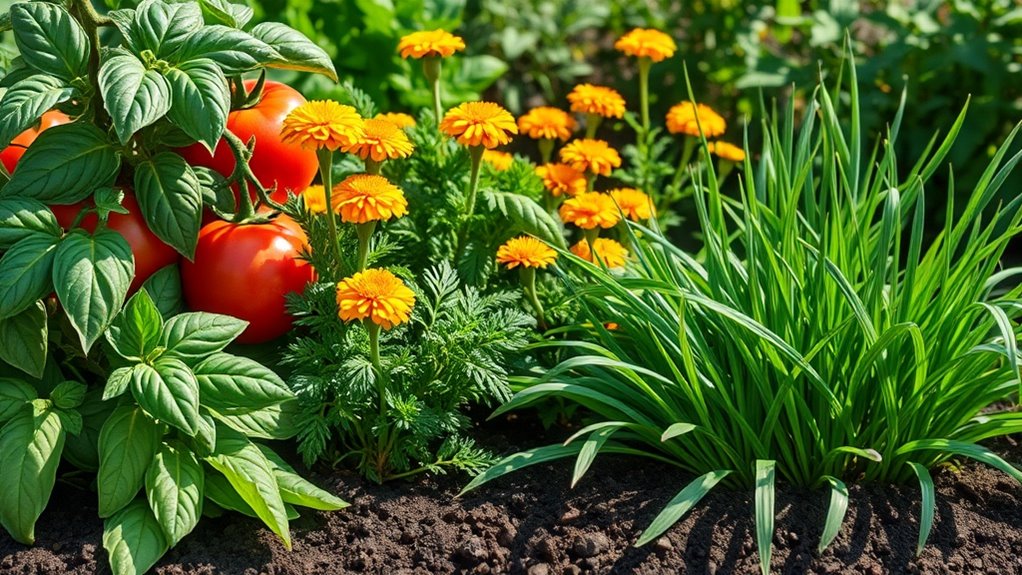These 3 Companion Planting Rules Made My Garden Healthier
When you apply companion planting rules, you’ll notice a significant improvement in your garden’s health and productivity. For instance, pairing specific plant varieties can enhance flavor and deter pests effectively. Additionally, using certain flowers can create a natural barrier against harmful insects. By maximizing your garden space and resources, you’ll foster a thriving ecosystem. As you consider these strategies, the impact on your harvest may surprise you. What changes will you make?
Choose Complementary Plant Varieties
When planning your garden, it’s essential to choose complementary plant varieties that will thrive together. Understanding companion planting secrets can help you maximize space and boost yields. For instance, pairing tomatoes with basil enhances flavor and deters pests. Likewise, planting marigolds with vegetables can repel harmful insects. Additionally, utilizing benefits for soil health through specific pairings can enhance the overall vitality of your garden.
Utilize Natural Pest Deterrents
Although pests can wreak havoc in your garden, utilizing natural deterrents offers a sustainable solution to protect your plants.
Integrate plants like marigolds, which repel nematodes and aphids, or basil, known to deter flies and mosquitoes. Additionally, garlic spray can inhibit various insects. Moreover, implementing natural pest control methods can help establish a healthier ecosystem in your garden.
Maximize Space and Resources
To maximize your garden’s space and resources effectively, consider the principles of companion planting alongside strategic layout planning. By grouping plants with complementary needs, you’ll enhance yield while conserving space and nutrients. Additionally, exploring innovative companion planting combinations can lead to better pest control and improved plant health.
| Plant A | Plant B | Benefits |
|---|---|---|
| Tomatoes | Basil | Increased growth flavor |
| Carrots | Onions | Pest deterrence |
| Beans | Corn | Nitrogen fixation |

